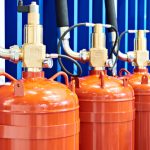A Comprehensive Guide to Modern Fire Suppression Systems
Fire is one of the most devastating calamities that can occur in any setting, be it a home, office, or industrial space. The importance of fire suppression systems cannot be understated in safeguarding lives and property. With advancements in technology, modern fire suppression systems have revolutionized the way fire incidents are prevented, detected, and controlled. In this comprehensive guide, we will discuss the different types of modern fire suppression systems and their key features, highlighting their effectiveness in combatting fires.
1. Water-Based Fire Suppression Systems:
Water-based fire suppression systems remain the most commonly used and effective method to combat fires. They utilize water as the primary extinguishing agent to control and extinguish fires. Examples of water-based suppression systems include deluge systems, wet pipe sprinklers, and pre-action sprinklers.
Deluge systems are commonly used in hazardous areas with high fuel loads. These systems activate an entire area by releasing a large volume of water when a fire is detected.
Wet pipe sprinklers, on the other hand, are permanently filled with pressurized water. They activate individually when heat from a fire causes the sprinkler heads to open, allowing water to discharge.
Pre-action sprinkler systems combine the benefits of wet and dry pipe systems. They require the activation of a detection system and the automatic release of water once a fire is confirmed, ensuring enhanced fire detection.
2. Gaseous Fire Suppression Systems:

Chemical agents commonly used in gaseous fire suppression systems include carbon dioxide (CO2), FM-200 (heptafluoropropane), and Novec 1230 (a synthetic clean agent). These agents extinguish fires by reducing the oxygen levels in the space or inhibiting the chemical reaction needed for combustion.
Gaseous systems are highly effective due to their ability to rapidly distribute the suppressant within the protected area. Their non-conductive and non-corrosive properties make them suitable for safeguarding delicate and valuable assets.
3. Foam-Based Fire Suppression Systems:
Foam-based suppression systems are widely regarded as the most efficient way to combat flammable liquid fires. These systems work by smothering the fire and forming a protective barrier between the fuel and the ignition source, preventing re-ignition.
There are two types of foam-based fire suppression systems: low-expansion foam and high-expansion foam. Low-expansion foam systems produce a thick blanket of foam, ideal for suppressing flammable liquid spills or fires involving machinery. High-expansion foam systems, on the other hand, generate large volumes of foam suitable for areas with complex environments or situations where rapid fire suppression is necessary, such as in aircraft hangars.
4. Hybrid Fire Suppression Systems:

For example, a hybrid system may incorporate water-based suppression along with a gaseous agent, providing initial fire knockdown with water and subsequent suppression using gas agents. This approach maximizes fire detection, control, and suppression efficiency.
Summary:
Modern fire suppression systems have significantly improved fire safety measures, offering a wide range of options to combat fires effectively. By understanding the different types of systems available, we can select the most suitable and efficient suppression system based on the specific environment and fire risks. Whether it’s a water-based, gaseous, foam-based, or hybrid system, investing in modern fire suppression technology is an essential step towards ensuring the protection of lives and property from fire-related hazards.
Need a Fire Equipment Supplier in Lawrenceville, GA?
Hello from AAA Fire Protection Resources, Inc.! Since opening our doors in 1981, we have been providing quality fire protection equipment for commercial locations all across Georgia! Some of the many products we offer include fire hydrants, fire training, emergency lights, exit signs, sprinkler systems, and fire alarms. In addition to selling all these products, we service and install them! We accept orders of all sizes, including large or bulk items! AAA Fire Protection Resources, Inc. offers some of the best equipment on the market all while being associated with the NFOA and NAFED, which ensures quality service! We are also active members of the GAFSED and WBENC! Give us a call today to set up an appointment or place an order!
Categorised in: Fire Suppression Systems
This post was written by admin
